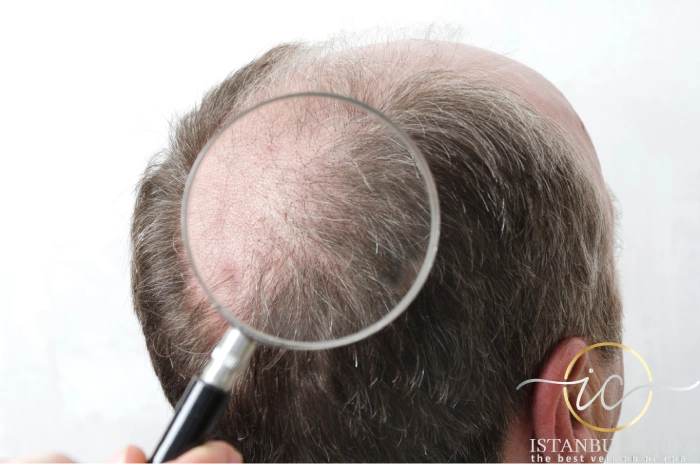[/vc_column_text]
Sleeping Positions After Hair Transplant
After a hair transplant, proper sleeping habits are essential to protect the newly implanted grafts and support the healing process. During the first few days, your scalp is highly sensitive, and incorrect sleeping positions can affect the outcome of your procedure.
Why Sleeping Position Matters
Transplanted hair follicles are fragile in the initial days. Improper pressure or friction can cause:
– Dislodged grafts
– Increased swelling
– Delayed healing
– Uneven hair growth
Choosing the right sleeping position ensures the grafts stay in place and the donor area heals smoothly.
Best Sleeping Position After Hair Transplant
Sleep on your back with your head elevated for the first 5–7 days. Here’s how to do it safely:
– Use 2–3 soft pillows or a travel neck pillow to keep your head elevated at a 45-degree angle.
– Avoid letting your head touch the headboard or pillow edges.
– Keep your head above heart level to minimize swelling.
This position reduces pressure on the treated areas and helps control post-operative swelling, especially on the forehead and around the eyes.
Positions to Avoid
For at least one week after surgery, avoid:
– Sleeping flat on your back (without elevation)
– Sleeping on your stomach, which can damage frontal grafts
– Sleeping on your side, which risks rubbing the grafts and increasing swelling
Extra Tips for Comfortable Sleeping
– Place a soft towel over your pillowcase to catch any minor bleeding or fluids.
– Use a recliner if you have trouble maintaining a back-sleeping position in bed.
– Avoid touching or scratching the transplanted area, especially during sleep.
When Can You Sleep Normally Again?
You can typically return to your normal sleeping position after 7–10 days, once the grafts are securely anchored and scabbing has resolved. Your specialist may adjust this timeline based on healing progress.
Final Thoughts
Adopting the right sleeping position after a hair transplant is a small but crucial step toward successful recovery. By sleeping with your head elevated and avoiding pressure on the transplanted area, you help ensure the best possible results for your new hair.
FAQs About Sleeping Positions After Hair Transplant
It is advised to sleep on your back with your head elevated at a 45-degree angle for the first few nights post-surgery. This position helps reduce swelling and prevents pressure on the transplanted grafts.
Using two or more pillows to prop up your head or sleeping in a recliner can maintain the necessary elevation, aiding in reducing swelling and promoting healing.
Patients are typically advised to avoid sleeping on their side or stomach for at least the first week after surgery to prevent dislodging grafts and to minimize swelling.
Yes, a U-shaped neck pillow can help stabilize your head, limit movement during sleep, and prevent accidental contact with the transplanted area.
It’s recommended to follow these sleeping guidelines for the first 7-10 days post-procedure, as this period is critical for graft stability and healing.
Keeping your room cool can improve sleep quality and reduce the likelihood of sweating, which can irritate the scalp. Additionally, using clean, soft pillowcases can protect the scalp from friction and bacteria.
- Itching: Itching is common as the scalp heals. Refrain from scratching, as it can dislodge grafts. Consult your doctor for appropriate medication if itching becomes bothersome.
- Swelling: Swelling typically peaks a few days after the surgery. Besides elevating your head, applying a cold compress (not directly on the grafts) can help alleviate swelling.
[/vc_column_text]
Sleeping Positions After Hair Transplant
After a hair transplant, proper sleeping habits are essential to protect the newly implanted grafts and support the healing process. During the first few days, your scalp is highly sensitive, and incorrect sleeping positions can affect the outcome of your procedure.
Why Sleeping Position Matters
Transplanted hair follicles are fragile in the initial days. Improper pressure or friction can cause:
– Dislodged grafts
– Increased swelling
– Delayed healing
– Uneven hair growth
Choosing the right sleeping position ensures the grafts stay in place and the donor area heals smoothly.
Best Sleeping Position After Hair Transplant
Sleep on your back with your head elevated for the first 5–7 days. Here’s how to do it safely:
– Use 2–3 soft pillows or a travel neck pillow to keep your head elevated at a 45-degree angle.
– Avoid letting your head touch the headboard or pillow edges.
– Keep your head above heart level to minimize swelling.
This position reduces pressure on the treated areas and helps control post-operative swelling, especially on the forehead and around the eyes.
Positions to Avoid
For at least one week after surgery, avoid:
– Sleeping flat on your back (without elevation)
– Sleeping on your stomach, which can damage frontal grafts
– Sleeping on your side, which risks rubbing the grafts and increasing swelling
Extra Tips for Comfortable Sleeping
– Place a soft towel over your pillowcase to catch any minor bleeding or fluids.
– Use a recliner if you have trouble maintaining a back-sleeping position in bed.
– Avoid touching or scratching the transplanted area, especially during sleep.
When Can You Sleep Normally Again?
You can typically return to your normal sleeping position after 7–10 days, once the grafts are securely anchored and scabbing has resolved. Your specialist may adjust this timeline based on healing progress.
Final Thoughts
Adopting the right sleeping position after a hair transplant is a small but crucial step toward successful recovery. By sleeping with your head elevated and avoiding pressure on the transplanted area, you help ensure the best possible results for your new hair.
FAQs About Sleeping Positions After Hair Transplant
It is advised to sleep on your back with your head elevated at a 45-degree angle for the first few nights post-surgery. This position helps reduce swelling and prevents pressure on the transplanted grafts.
Using two or more pillows to prop up your head or sleeping in a recliner can maintain the necessary elevation, aiding in reducing swelling and promoting healing.
Patients are typically advised to avoid sleeping on their side or stomach for at least the first week after surgery to prevent dislodging grafts and to minimize swelling.
Yes, a U-shaped neck pillow can help stabilize your head, limit movement during sleep, and prevent accidental contact with the transplanted area.
It’s recommended to follow these sleeping guidelines for the first 7-10 days post-procedure, as this period is critical for graft stability and healing.
Keeping your room cool can improve sleep quality and reduce the likelihood of sweating, which can irritate the scalp. Additionally, using clean, soft pillowcases can protect the scalp from friction and bacteria.
FAQs About Sleeping Positions After Hair Transplant
It is advised to sleep on your back with your head elevated at a 45-degree angle for the first few nights post-surgery. This position helps reduce swelling and prevents pressure on the transplanted grafts.
Using two or more pillows to prop up your head or sleeping in a recliner can maintain the necessary elevation, aiding in reducing swelling and promoting healing.
Patients are typically advised to avoid sleeping on their side or stomach for at least the first week after surgery to prevent dislodging grafts and to minimize swelling.
Yes, a U-shaped neck pillow can help stabilize your head, limit movement during sleep, and prevent accidental contact with the transplanted area.
It’s recommended to follow these sleeping guidelines for the first 7-10 days post-procedure, as this period is critical for graft stability and healing.
Keeping your room cool can improve sleep quality and reduce the likelihood of sweating, which can irritate the scalp. Additionally, using clean, soft pillowcases can protect the scalp from friction and bacteria.
FAQs About Sleeping Positions After Hair Transplant
It is advised to sleep on your back with your head elevated at a 45-degree angle for the first few nights post-surgery. This position helps reduce swelling and prevents pressure on the transplanted grafts.
Using two or more pillows to prop up your head or sleeping in a recliner can maintain the necessary elevation, aiding in reducing swelling and promoting healing.
Patients are typically advised to avoid sleeping on their side or stomach for at least the first week after surgery to prevent dislodging grafts and to minimize swelling.
Yes, a U-shaped neck pillow can help stabilize your head, limit movement during sleep, and prevent accidental contact with the transplanted area.
It’s recommended to follow these sleeping guidelines for the first 7-10 days post-procedure, as this period is critical for graft stability and healing.
Keeping your room cool can improve sleep quality and reduce the likelihood of sweating, which can irritate the scalp. Additionally, using clean, soft pillowcases can protect the scalp from friction and bacteria.


